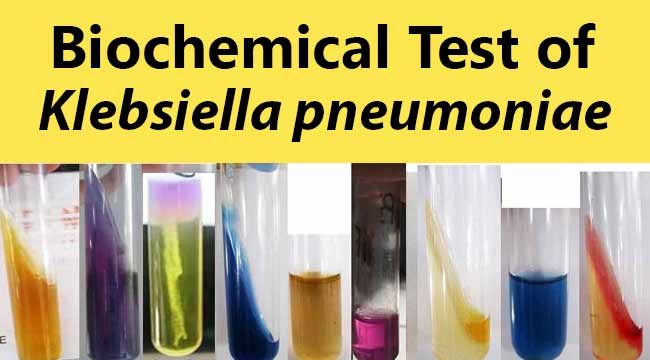| Characteristics | Klebsiella pneumoniae |
|---|---|
| Capsule | +ve |
| Catalase | +ve |
| Citrate | +ve |
| Flagella | -ve |
| Gas | +ve |
| Gelatin Hydrolysis | -ve |
| Gram Staining | -ve |
| Growth in KCN | +ve |
| H2S | -ve |
| Indole | -ve |
| Motility | -ve |
| MR (Methyl Red) | -ve |
| MUG Test | +ve |
| Nitrate Reduction | +ve |
| OF (Oxidative-Fermentative) | Fermentative |
| Oxidase | -ve |
| Pigment | -ve |
| Shape | Rod |
| Spore | -ve |
| TSIA (Triple Sugar Iron Agar) | A/A |
| Urease | +ve |
| VP (Voges Proskauer) | +ve |
| Fermentation of | |
| Adonitol | +ve |
| Arabinose | +ve |
| Arabitol | +ve |
| Cellobiose | +ve |
| DNase | -ve |
| Erythritol | -ve |
| Esculin Hydrolysis | +ve |
| Glucose | +ve |
| Glycerol | +ve |
| Inositol | +ve |
| Lactose | +ve |
| Maltose | +ve |
| Mannitol | +ve |
| Mannose | +ve |
| Melibiose | +ve |
| Mucate | +ve |
| MyoInositol | +ve |
| Raffinose | +ve |
| Rhamnose | +ve |
| Salicin | +ve |
| Sorbitol | +ve |
| Sucrose | +ve |
| Tartrate | +ve |
| Trehalose | +ve |
| Xylose | +ve |
| Enzymatic Reactions | |
| Acetoin Production | Variable |
| Arginine Dehydrolase | -ve |
| Esculin Hydrolysis | +ve |
| Lipase | -ve |
| Lysine | +ve |
| ONPG (β-galactosidase) | +ve |
| Ornithine Decarboxylase | -ve |
| Phenylalanine Deaminase | -ve |
| Tryptophan Deaminase | -ve |
| Tyrosine Hydrolysis | -ve |


A/A means acid but and acid slant.
Both butt and slant are acid
Hullo, on Triple Sugar Iron Agar (TSI), the results depicting (A/A), can this be interpreted as both the butt and the slant are ACID or ALKALINE, which is which? Thanks.
HMC
Hi, I found your answer here: https://www.austincc.edu/microbugz/triple_sugar_iron_agar.php This has a great explanation of both the test and all the results.
A/A refers to Acid/Acid – Yellow/Yellow
Alk/A refers to Alkaline/Acid – Red/Yellow or vice versa
A/A means acid over acid
Can catalase-positive strains be negative in oxidase?how??
Catalase and oxidase are two different, unrelated enzymes. Catalase is an enzyme that protects from oxidative damage. Oxidase is found in bacteria that can use oxygen (facultative and obligate aerobes.)